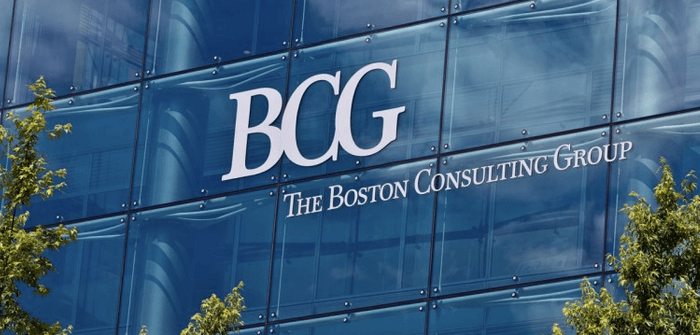Doctoral degrees are valuable, not just for employment in research and higher education, but also outside of academia. Academic hiring freezes during the pandemic has resulted in a tough job market for recent PhD graduates, that has sparked a renewed interest in jobs outside of academia for the highly-educated. Below are the companies that employ the highest numbers of doctoral degree holders. Tech companies lead the way, hiring high numbers of PhDs from engineering and computer science.
The amount of time employees stay with a single company can tell us a lot about the regional labor market. Short tenures can be a sign of labor market instability, but can also be a consequence of a natural dynamism in regional labor markets, as employees and employers go through several iterations to find a good fit. Below, we take a look at the median employee tenure by country.
Open source software -- that anyone can see, modify, and distribute the source code free of charge -- offers a publicly-accessible, and free alternative to proprietary software. Many companies have embraced collaborative software over the last decade and have achieved massive success. But as the open source movement picks up the pace, which companies missed the memo? By tracking the skills most associated with open source -- Python, and R -- and their proprietary counterparts -- MATLAB, SPSS, SAS, and Stata -- we’ve ranked the workforces most skilled in open source.
Companies are increasingly building alumni networks, enabling former employees to stay connected. These networks offer powerful benefits, not only for the employees but for the companies themselves, such as improving the quality of new talent and building stronger strategic partnerships. So in this new type of corporate community, which company has the most powerful alumni network?
In the first half of 2021 there was an unprecedented surge in demand for mental health and fitness services. Tracking the salaries for health coaches over time, we see not only a recovery from the pandemic, but also an extremely rapid spike in 2021. But how are these new demands changing the wellness economy? This rising demand for wellness services has resulted in large salary increases for specific roles. In the figure below, we see that coaches, counselors, and support workers have the highest growth in salaries.
Every company faces a choice of where to source their management team: from within the company or from outside? The implications of this choice are enormous. Leaders that are groomed internally already know the business and can easily fit within the corporate culture. However, leaders from outside often come with more proven track records.
Recruitment of veterans is a big value for US employers, many of which invest in large initiatives to hire more from this highly trained and heroic talent pool. This week we explore which companies are leading the pack to employ veterans and which ones are falling behind. Below is a ranking of companies by the share of veterans in their workforce. Among those with the highest shares, we see many security intelligence companies:
Dollar General has been accused of causing food deserts in low-income areas. While there is an abundance of anecdotal evidence on this, there has been little empirical evidence. By tracking Dollar General employees and comparing them to traditional grocery store employees, we are able to better understand the relationship between Dollar General and food deserts. Although both Dollar General and traditional grocery stores have been growing steadily
Fears of inflation are heating up. But wages are telling a different story. This week we explore salaries to see what industries and jobs are most affected. In a previously published newsletter titled, Labor Markets are Not as Healthy as They Look, we documented an 8.8% decrease in salaries from March to August 2020. In the figure below, we continue to observe a similar trend by looking at the average salary for the past 3 years.
There has been a great deal of attention brought to racial and gender inequities in the United States. And investors are now beginning to support companies that are trying to diversify their workforce. But even if these companies change their hiring behavior, is the tenure of the new diverse workforce consistent with the greater company’s? After hiring minority talent, a company could, seemingly, still converge towards a demographic monoculture. Not only would this be a vicious cycle, but also potentially hinder diversity of thought and productivity.
Attrition -- the loss of employees to turnover, retirement, or layoffs -- is one of the most important challenges employers face in managing a workforce. Excessive attrition can hurt business performance by impinging on productivity, morale and institutional knowledge. Understanding employment dynamics is especially timely given the increasing rate of workers leaving their job since the end of the Great Recession and the disruption caused by the Covid-19 pandemic.
Doctoral degrees hold the promise of increased earnings, interesting research opportunities, and part/full time teaching positions. Some fields of PhD study have a long and storied history, like Chemistry and Physics, whereas other fields are new and rapidly growing, such as Machine Learning and Computer Science. One question we set out to answer was how PhD fields have changed over time, and if there are general patterns we can identify to predict changes in PhD field growth?
Big tech companies have long been considered highly attractive places to work. They pay well, offer top notch perks, and are full of talented people working on difficult technical problems. Being tech companies, most of their workforce is composed of jobs that require technical skills.
Consulting firms have long been a career launching pad to young professionals, promising a feather in the proverbial career cap to employees in exchange for grueling work hours. A key part of this bargain is that consulting firms select top students which add to the prestige of the firm itself.
It seems like everywhere you turn there’s another company touting plans to focus on crypto. And after years of downplaying the technology, JP Morgan is the latest to join the crypto craze with the recent announcement that they are hiring for blockchain. Is this really a significant hiring trend or merely a small one laced with PR opportunities?By looking at all of the positions with the “blockchain” keyword, we’re able to identify companies with the greatest count of these positions:
Uber and Lyft have, for a long time, been the market leaders in the growing rideshare industry, but their competitive dynamics have been anything but constant. In many ways, they can be thought of as a duopoly, fighting for dominance, but in other ways, they are competing simultaneously in many local submarkets. Uber’s overall market share, relative to Lyft, has been falling over the last ten years. By breaking down this market into the territories it serves, we’re able to see this share broken down further. It appears that Uber dominates smaller markets without much competition, but Lyft has a much larger relative footprint in larger cities.
Data is one of the most valuable resources today. The companies that own and store the world's largest and most valuable data wield enormous influence. Yet despite their power, these companies are increasingly vulnerable to data breaches, a costly and reputationally damaging affair.
Understanding the long term effects of two merging companies is complex. There are the melding of cultures, product lines, egos, and, not to mention, workforces. With all these complex variables, it’s no wonder so many mergers fail, and even more miraculous when some wildly succeed. So what makes a good or bad merger, and how can we predict them better?
Tesla’s CEO Elon Musk has, on more than one occasion, promoted the idea that the automotive company is uninterested in pedigree. In a noteworthy string of tweets in February, Musk wrote, “Don’t care if you even graduated high school… Educational background is irrelevant, but all must pass hardcore coding test.”
For years, the US military has promoted the idea that the armed forces is an effective launching pad to leadership positions. We wanted to dig into this presumption and explore whether those with military backgrounds really get more senior positions once they enter the corporate world. By tracking the careers of both veterans and non-veterans, we see how military service affects seniority when compared to civilians.


























